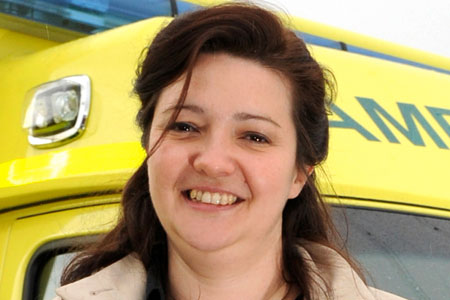How far are you willing to go to address environmental concerns? Put your drivers through eco-driving training? Perhaps implement a CO2 cap? Regularly check tyre pressures?
What about approaching a leading UK university with a view to jointly researching an aerodynamic van body and presenting the findings to manufacturers and converters so they can adopt new designs?
That’s how far Yorkshire Ambulance Service NHS Trust (YAS) and its environmental and sustainability manager Alexis Keech have gone.
Last year, Keech approached Leeds University to discuss a project investigating aerodynamic design optimisation and the potential for CO2, and therefore fuel, savings.
The university accepted the challenge and, funded by a grant from the European Union, set about studying the aerodynamic characteristics on a range of ambulances.
The research is only the latest in a long line of environmentally-focused initiatives that Keech has initiated at Yorkshire Ambulance Service.
A former environmental consultant, she joined the organisation around three years ago and immediately made an impact, and not just with YAS.
Arguably her biggest contribution to date is the creation of the Green Environmental Ambulance Network (GrEAN) and its Green Passport, which most ambulances services in the UK have signed up to.
The initiative goes beyond fleet into property, IT, procurement and, importantly, into the employees’ home.
“If you do it at home, you can do it at work,” Keech says of her philosophy. “And if you learn it at work, you can take it home.”
Established in May 2011, the programme was borne from Keech’s recognition that, despite working in isolation at YAS, carbon reduction was a countrywide issue for ambulance services.
Getting buy-in from each region was, she admits, initially a challenge.
The solution was to focus on the financial incentives and also the broader health implications.
Reducing emissions results in fuel savings, which is the biggest overhead for ambulance services. Using less fuel, meanwhile, brings health benefits, resulting in fewer illnesses: a win-win situation.
From being the only sustainability manager within the ambulance network, she is now one of three as other services began to recognise the advantages to employing an environmental specialist – not least from the potential to reduce their fuel bill.
“The pound signs make a difference; it gets buy-in,” says Keech, who spends around 60% of her time on fleet initiatives.
Nationwide, the British ambulance service has the potential to save thousands of tonnes of carbon and millions of pounds on fuel through their carbon reduction plans.
Ensuring the right vehicle is selected for each job is one area where YAS is making gains: the difference between deploying a rapid response vehicle compared to a double-manned ambulance is 15-20mpg.
So how will those aerodynamic bodies help?
Leeds University’s research shows that drag forces acting on the common box-body ambulance designs could be reduced by 20% by employing aerodynamic styling.























Karen Cunningham - 28/11/2012 01:29
Awesome article. Sending a link to it to a friend of mine who works in this area, to see what they are doing in London, Ontario with regards to "greening" our ambulances and ambulance stations.